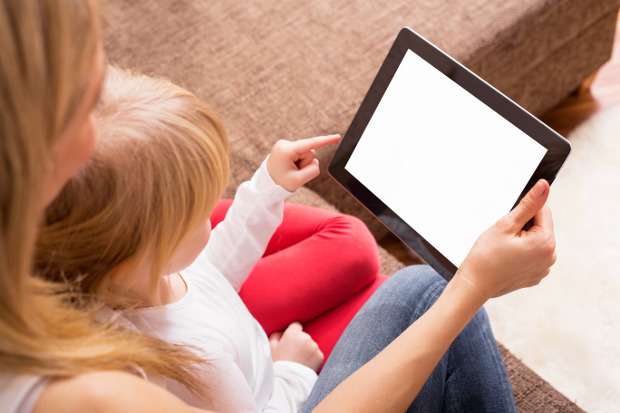Credit: Virginia Commonwealth University
The American Academy of Pediatrics recently announced an update to its screen time guidelines, which included a revamped definition of screen time as it relates to unhealthy, online toggle time. The organization now says its limits apply just to time spent on entertainment and not on educational tasks. No more than two hours had been the AAP's standard guideline for online activity.
Now, by age 6, instead of specific limits, the guidelines call for "consistent" limits set by a child's parent or guardian. In a similar discussion about the effects of social media on children, a Journal of the American Medical Association Pediatrics paper revealed that "media-addicted kids," are experiencing sleep disorders because of disproportionate amounts of time spent online, instead of resting or being otherwise constructive. The analysis used data from 26,000 children.
As the holidays approach and children likely have more free time from school, N. Romesh Wijesooriya, M.D., chief of general pediatrics at Children's Hospital of Richmond at Virginia Commonwealth University, suggest parents use practical methods to keep children entertained and healthily engaged in society. He recently answered questions from VCU News about the importance of monitoring children's online presence, what to do during down time, and why parents and guardians are the most important teachers to a growing child, even when it comes to media use.
At what age should length of screen time become an area of concern for parents?
Starting in the first few months of life, parents should pay attention to the amount of time they allow their children to be in front of a screen and the content to which their child is being exposed. The new recommendations from the AAP state that from birth up to 18 months of life, screen time should be limited to phone chatting or computer chatting with family and friends. Other than that, infants should really be interacting with people and with toys, and engaging in free play in order to develop their imagination, creativity and human interaction skills.
The AAP emphasizes that parents should "prioritize creative, unplugged playtime for infants and toddlers." What are the perceived dangers in not doing this?
Prioritizing creative and free time for infants and toddlers is essential for their developing brain, especially during the early months and years. Specifically, creative play and human-to-human interaction are both vital for the optimal development of communication [verbal and nonverbal], motor and socioemotional skills.
What things are lost to adolescents when too much screen time is allowed?
It is apparent that certain human-to-human skills like the nuances of verbal and nonverbal communication are affected. Also, the skills required to share and compromise are not developed as well when a child or adolescent spends too much time interacting with a screen. Therefore, there is less time interacting with friends or family members. Data also reveals that excessive screen time for teenagers is associated with a higher likelihood of obesity, poor sleep habits and hygiene, exposure to inappropriate material, riskier sexual behavior and lower self-esteem, among other things.
What sorts of activities can parents create that provide the stimulation and learning experiences that social media does not?
All activities that involve person-to-person interactions, hands-on learning, utilizing your body and mind at the same time, and using one's imagination will provide stimulation that a screen simply cannot. Some specific examples of non-screen activities to consider for your child are listed below:
- Sports
- Art work
- Music (learning an instrument, singing, etc.)
- Dance of any sort
- Building games (Lego, building forts, etc.)
- Board games
- Reading
- Free play
Are there specific signs that indicate a child is being allowed too much screen time?
There are no specific physical or behavioral signs that a toddler or adolescent is being allowed too much screen time. However, statistics are clear that from infancy through adulthood there are a number of negative consequences of having too much screen time.
Where can parents go if they feel screen time and internet use is negatively affecting their child, particularly teens?
Parents should discuss their concerns with their pediatrician and their children's teachers and develop ideas for how to appropriately use screens and social media. Furthermore, the AAP has developed a very useful tool to help parents develop a media use plan for the entire family. You can access this tool at www.healthychildren.org/MediaUsePlan.
How can parents be a 'media mentor' and model positive, purposeful internet use in front of their children?
Children learn primarily by copying what they see and what the norms are in their home environment. Here are some very practical things for parents and guardians to consider as they try to create and model healthy behavior for their children when it comes to screen time and media use:
- Never put screens—televisions, computers, video games—in a child's bedroom. Doing that encourages them to watch television or play video games in their "down time." The bedroom should be used for sleeping and playtime, not for screen time. Screens of all kinds should be kept in common areas like living rooms.
- Do not have screens on during meal time. Meal time should be for eating and socializing with family and friends.
- Do not use screens as the main way to calm your child down.
- When your child is watching television or using other devices, engage with them so you know what they are doing and you can help them learn from you as they watch and play.
- Turn off all devices about an hour before bedtime.
- Do not have the television on in the background at all times. When no one is watching it, the television should be off and not used as a default activity.
Provided by Virginia Commonwealth University



















